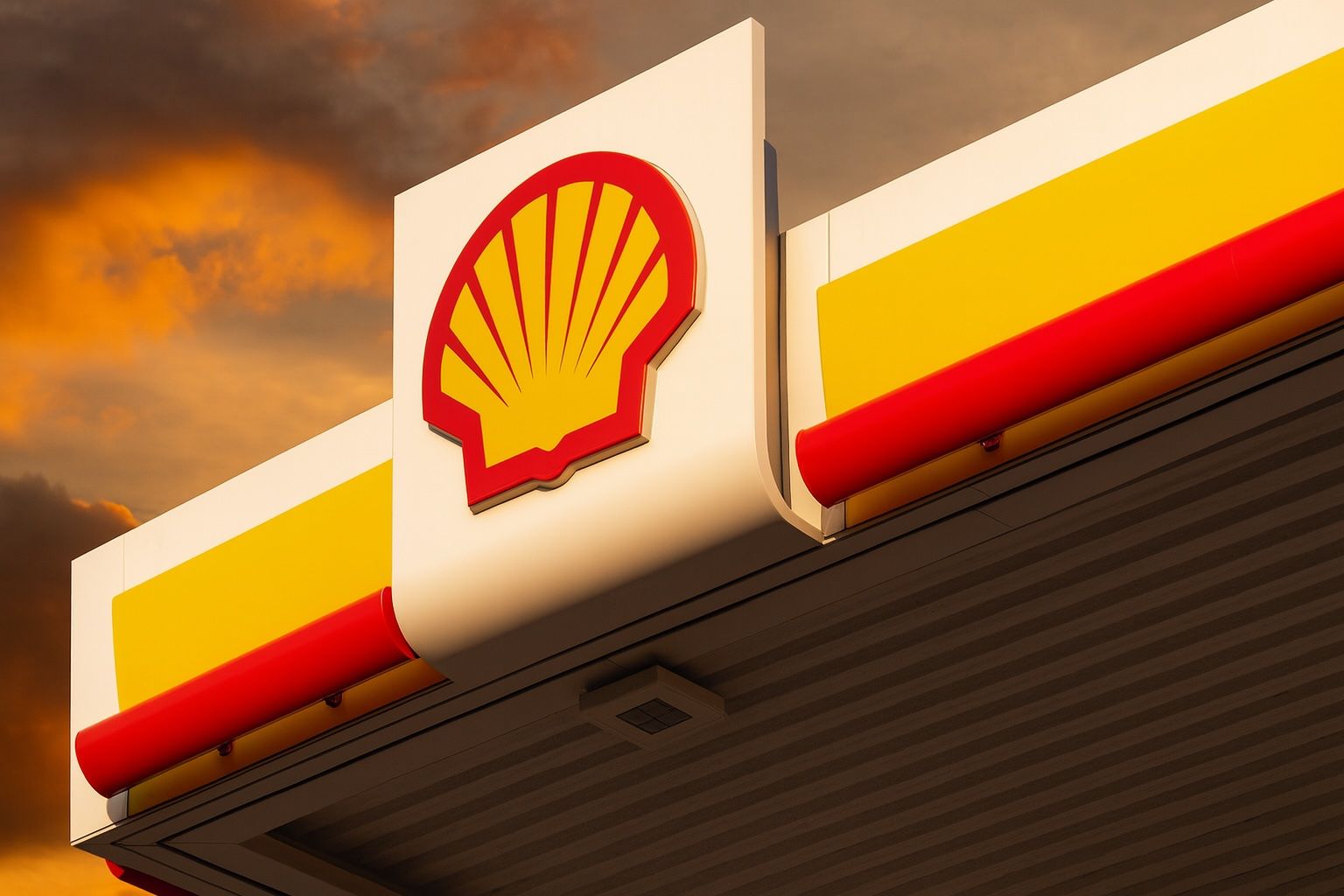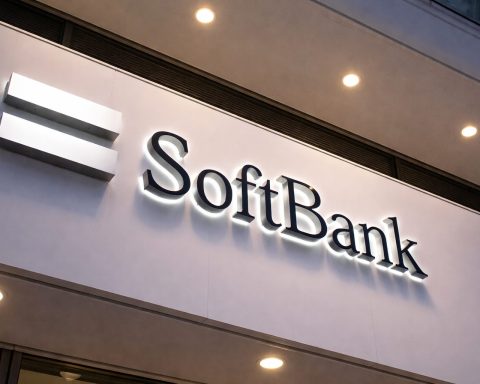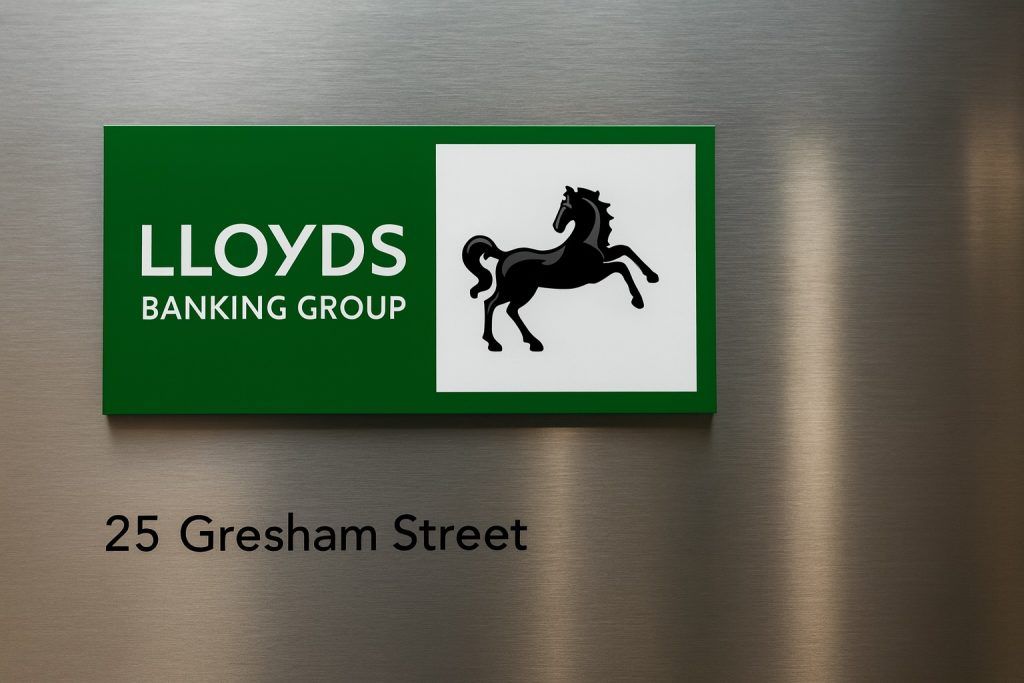- Stock Steady After Volatile Week: Shell plc’s London-listed shares traded around 2,672 pence as of October 17, 2025, ending the week up about 3.6% despite mid-week swings [1] [2]. The stock hovered ~6% below its 52-week high, buoyed by ongoing share buybacks and resilient investor sentiment.
- Q3 Outlook Raised – Analysts Bullish: Shell’s third-quarter trading update signalled higher output and margins – upstream oil production 1.79–1.89 million boe/d, stronger LNG volumes, and refining margins up to $11.6/bbl (from $8.9) [3]. Analysts remain broadly optimistic with 12 “Buy” ratings, 6 “Hold” and 0 “Sell”, and an average price target ~3,100 GBp (~15% above current levels) [4]. The company is forecast to report Q3 earnings on Oct 30, with robust gas trading expected to boost results.
- Major Investment in Nigeria: This week Shell approved a $2 billion offshore gas project in Nigeria, aiming to supply 350 million cubic feet/day to the NLNG export terminal by the late 2020s [5]. Executives say the project will grow Shell’s Integrated Gas portfolio and bolster Nigeria’s LNG exports [6]. Markets reacted calmly – Shell’s stock dipped ~0.4% to ~2,685p on the news [7] – as investors view it as a long-term strategic move amid the energy transition.
- Oil & Gas Prices Weigh on Valuation:Brent crude oil hovers near $62/barrel, down over $15 from a year ago [8], reflecting OPEC+ output hikes and economic worries. This year’s softer oil and gas prices have pared Shell’s record profits (Q2 net income fell ~32% YoY [9]), yet Shell still beat forecasts and continues hefty shareholder payouts. The company maintained $3.5 billion in buybacks in Q2 and has repurchased 1.56 million shares just this week at ~£26.84 each [10], underpinning its stock price.
- Expert Forecasts & Sector Outlook: Market experts note short-term headwinds but long-term strength. Trading houses predict oil could dip into the $50s by year-end amid surplus supply [11], yet they see a tighter market next year as production declines and demand from emerging economies grows [12]. “Prices are slowly coming down, and will come down a little bit more,” observed Gunvor CEO Torbjörn Törnqvist [13], while TotalEnergies’ chief said he is “quite bullish on the medium term”, citing no imminent peak in oil demand [14]. Analysts say Shell is well-positioned – its estimated 12% free cash flow yield suggests the stock remains undervalued relative to U.S. rivals [15], with further upside if energy markets stabilise.
Shell Stock Climbs Amid Market Volatility
Shell plc’s stock price held firm on Friday at around £26.72 per share, capping off a choppy week on a positive note. The shares inched up ~0.2% on the day [16] – a notable rebound after slipping earlier when global markets sold off. Over the past few sessions, Shell’s price oscillated between roughly £26.3 and £26.8 as investors digested oil price swings and company news [17]. Despite this volatility, Shell’s stock gained roughly 3–4% on the week [18], outpacing the broader FTSE 100 which fell to two-week lows amid banking and commodity weakness [19].
Traders say resilient oil & gas demand and Shell’s shareholder-friendly actions have helped support the share price. The company is in the midst of an aggressive buyback programme, which has consistently absorbed supply of shares. In fact, Shell repurchased 1.56 million shares for cancellation on October 16 alone as part of its ongoing buybacks [20]. This capital return strategy – now running 15 straight quarters at $3–3.5 billion per quarter [21] – has steadily bolstered earnings per share and investor confidence. “Buying back Shell shares continues to be absolutely the right alternative for us,” CEO Wael Sawan told the FT earlier this year, affirming his preference for buybacks over splashy acquisitions [22].
Even so, Shell’s valuation reflects some caution. At ~£26.7, the stock trades on a moderate earnings multiple and about a 5% dividend yield. It remains a few percent shy of its 2025 highs (~£28.30) despite oil majors enjoying strong cash flows in recent years. Some of this discount is due to commodity price uncertainty – with oil prices sliding from last year’s peaks – and lingering concerns over windfall taxes and longer-term energy transition challenges. Yet by traditional metrics, Shell looks attractive: its free cash flow yield is estimated around 12% for 2026, suggesting the market isn’t fully pricing in the company’s earnings power [23]. That has prompted many analysts to argue Shell is undervalued relative to U.S. peers, especially given its consistent buybacks and cost cuts. Year-to-date, Shell’s London shares have crept about 5–6% higher, a modest rise that belies the company’s hefty shareholder payouts and strategic refocus.
Financial Outlook: Strong Q3 Expected, Analysts Upbeat
Shell is heading into its third-quarter earnings report (due 30 October 2025) with tailwinds from a robust operational performance. In an official Q3 trading update released on 7 October, the energy giant upgraded its guidance for several divisions, pointing to a much improved quarter [24]. The company raised its refining margin indicator to $11.6 per barrel (from $8.9 previously) amid stronger refining economics [25]. It also projected higher upstream oil and gas output, guiding production to 1.79–1.89 million barrels of oil equivalent per day, and higher LNG liquefaction volumes of 7.0–7.4 million tonnes [26]. Importantly, Shell flagged a rebound in its trading results: after a weak spring, oil and gas trading “recovered” in Q3, according to the update [27], likely boosting the Integrated Gas division’s earnings.
Analysts say these positive signals set the stage for a strong quarter. “Shell expects higher upstream production, increased refining margins and strong gas trading to boost its Q3,” noted a report from The Motley Fool [28]. Early consensus estimates predict Shell’s adjusted profit will rise quarter-on-quarter, even if still below last year’s record levels due to softer commodity prices. Notably, Shell did caution of a few one-off charges – including a ~$600 million impairment related to the cancellation of a Rotterdam biofuel project [29] – and weakness in its Chemicals segment, which is expected to post a loss amid poor industry conditions. But these items are largely non-cash or already known, and analysts aren’t fazed. “It’s a mixed bag of segment drivers, but no major surprises,” observed one market analyst, adding that Shell’s overall outlook “reads like a corporate victory lap” as it navigates the energy transition [30].
Wall Street and City forecasters maintain a bullish stance on Shell. According to market data, 12 out of 18 analysts rate the stock a “Buy”, with zero “Sell” ratings [31]. The average 12-month price target is roughly £31.00 per share (about $80 for the U.S.-listed stock), implying mid-teens percentage upside from current levels [32]. Some brokers are even more optimistic: targets as high as £35 have been cited, reflecting expectations that Shell’s streamlined portfolio and high cash generation deserve a richer valuation. “Shell is delivering on cash returns and still trading at a discount – there’s room to rerate,” one London-based portfolio manager told Reuters. The company’s commitment to discipline is also earning kudos. Under CEO Sawan, Shell has slashed costs by nearly $4 billion so far [33] and refocused on its most profitable core businesses. All this has allowed Shell to keep increasing shareholder distributions (46% of operating cash flow over the past year [34]) even as oil prices cooled.
Looking ahead, analysts will be watching for any updates to Shell’s capital spending or energy transition plans in the upcoming earnings. Shell shocked some observers in September by axing the Rotterdam “HEFA” biofuels plant – a project it deemed uncompetitive – underscoring a pivot back toward oil and gas profitability [35]. The company insists it is still committed to climate goals, but investors have generally cheered the more cautious approach on low-margin green projects. Indeed, former CEO Ben van Beurden remarked recently that Shell’s shares were “massively undervalued” partly because European oil majors haven’t enjoyed the same valuation as U.S. rivals, despite comparable returns [36]. The current CEO appears determined to close that gap through relentless buybacks and operational excellence rather than transformative mergers. So far, this strategy is yielding solid results – a fact the market may further acknowledge if Q3 earnings come in strong.
Energy Market Context: Oil Slump vs. Long-Term Demand
Broader energy market trends form the backdrop to Shell’s recent performance. Crude oil prices have weakened in 2025, easing from last year’s highs as supply has outstripped demand growth. On Friday, benchmark Brent crude traded around $62 per barrel [37] – a five-month low and down significantly from the $80–90 range seen in 2024. Several factors are driving this pullback. OPEC+ producers have ramped up output, unwinding earlier production cuts, just as concerns mount that trade tensions and slower economies will crimp oil consumption [38]. The International Energy Agency recently forecast a potential 4 million barrel-per-day surplus by 2026 if current trends continue [39], putting short-term pressure on prices.
For oil majors like Shell, the immediate result is somewhat lower revenues compared to last year’s windfall. Shell’s Q2 2025 profit, for instance, dropped to $4.3 billion – nearly one-third lower than a year prior – precisely because oil and gas prices retreated from record levels [40]. However, Shell still comfortably beat earnings forecasts that quarter [41], proving it can thrive even in a softer price environment. One reason is the company’s huge LNG (liquefied natural gas) business, which has been a star performer. CEO Wael Sawan has emphasised building on Shell’s position as the world’s leading LNG trader [42], as global gas demand remains robust (with Europe and Asia hungry for non-Russian gas). In Q3, Shell’s Integrated Gas unit is expected to shine again, thanks to higher LNG volumes and trading gains. Natural gas prices have been volatile but are generally healthier in 2025 than earlier feared, after Europe averted an energy crisis last winter. This plays to Shell’s strengths, since roughly half its earnings now come from gas.
Meanwhile, market experts see today’s oil doldrums as a prelude to a tighter market ahead. At an industry forum in London this week, top energy traders predicted that while oil might “go into the $50s at some point” in the coming months [43], a supply-demand rebalance is on the horizon. “Prices are slowly coming down, and will come down a little bit more,” observed Gunvor’s chief Torbjörn Törnqvist, citing rising OPEC spare capacity and extra exports from places like Iran and U.S. shale [44]. But beyond the near term, declines in oilfield investment and natural reservoir depletion could tighten supply. “We are quite bullish on the medium term,” TotalEnergies CEO Patrick Pouyanné said, noting that no peak in global oil demand is in sight yet and decline rates in existing fields are steep [45]. Executives from Trafigura and Vitol echoed that sentiment, pegging Brent prices around $65 in a year’s time and warning that the market may be “overly discounting” geopolitical risks to supply [46] [47]. In fact, any disruption – be it a conflict affecting a major producer or a sharper-than-expected economic rebound – could send prices rebounding quickly.
This nuanced outlook suggests Shell’s fortunes are tied to more than just quarter-to-quarter oil fluctuations. The company benefits when prices are high, but it is also using the current period of softer prices to retool and invest for the future. Its cost cuts and focus on high-margin projects mean that even if oil languishes in the $60s, Shell can stay highly profitable. And if oil roars back above $80 in coming years, Shell could see another earnings windfall – with its leaner cost base supercharging cash flows. In essence, Shell is positioning itself to weather the volatility: shielding the downside through efficiency and gas diversification, while retaining upside to any oil price recovery. As evidence, despite 2025’s price dip, Shell is still on track for tens of billions in profit and has kept its dividend growing (the quarterly payout was hiked to $0.3575 per share, with a ~4% yield) alongside buybacks. That stability in shareholder returns is a key reason analysts and investors remain upbeat on Shell’s stock outlook.
Strategic Moves: Gas Gambit and Focused Growth
Even as it navigates near-term market conditions, Shell has been making strategic moves to drive long-term growth. A highlight this week was Shell’s decision to greenlight a $2 billion gas project in Nigeria’s deepwater – a major bet on the future of LNG. The project, known as the “HI” field, will be developed with local partner Sunlink Energies and is expected to produce 350 million cubic feet of gas per day once operational [48] [49]. That volume represents roughly one-third of the feedstock needed for Nigeria LNG’s new Train 7 expansion [50], meaning Shell’s investment will directly fuel additional LNG exports by the late 2020s. “This upstream project will help Shell grow our leading Integrated Gas portfolio, while supporting Nigeria’s plans to become a more significant player in the global LNG market,” said Peter Costello, Shell’s Upstream President, in support of the move [51]. Nigerian officials hailed Shell’s commitment as part of an $8 billion wave of oil and gas investments under the country’s new administration [52], after years of stagnation.
The Nigeria gas gambit aligns with Shell’s broader strategy: doubling down on LNG and natural gas as a “transition fuel” for coming decades. Shell forecasts its global LNG sales will grow 4–5% annually through 2030 [53], catering to rising demand for cleaner-burning fuel in Asia and Europe. In line with this, Shell has been shifting its portfolio – exiting weaker legacy assets and boosting gas and deepwater projects. Notably, in recent years Shell sold off all its onshore oil fields in Nigeria, which were plagued by spills and unrest, to focus on offshore operations [54]. It also sanctioned new developments like Bonga North (an offshore oilfield) and acquired additional stakes in lucrative projects alongside partners like Eni and TotalEnergies [55]. By focusing on offshore (where security and emissions can be better controlled) and on gas (which faces less climate-policy pressure than oil), Shell is carving out a resilient niche even as the world gradually shifts to renewables.
At the same time, Shell is exercising capital discipline. The recent cancellation of the Rotterdam biofuels plant – part of its Shell Energy and Chemicals Park plan – is a case in point. The company took a $0.6 billion write-down [56] rather than proceed with a project that had become economically unviable due to rising costs. This decision drew criticism from some environmental groups, who argue Shell should invest its bumper profits in green energy instead of doubling down on fossil fuels [57]. However, many investors welcomed the prudence: Shell is avoiding low-return projects and sticking to its strengths. CEO Sawan has been clear that while Shell will invest in renewables and low-carbon solutions, those ventures must deliver returns commensurate with the core oil and gas business. The company is prioritising investments like EV charging networks, hydrogen, and carbon capture where it sees a competitive edge, rather than chasing every trendy renewable opportunity. As a result, Shell’s capital expenditure remains roughly 75% focused on traditional oil and gas. This balance between embracing the energy transition and protecting profitability has been praised by some market experts as a “best of both” approach for an oil major in 2025’s uncertain landscape.
Outlook: Cautious Optimism Despite Uncertainties
Looking forward, Shell plc faces a complex mix of opportunities and risks. In the near term, the stock’s trajectory will likely hinge on commodity prices and the upcoming Q3 earnings. A strong earnings beat later this month – combined with any hints of extended buybacks or dividend hikes – could catalyse a breakout above the £28 level that has been a ceiling this year. Conversely, if oil prices continue to languish or global markets suffer another risk-off bout, Shell’s shares might remain range-bound or even pull back slightly. Investors will also keep an eye on geopolitical events (from Middle East tensions to European gas supply developments) that could sway energy markets and, by extension, Shell’s prospects.
However, the consensus among analysts is optimistic: Shell has proven adept at generating cash in varied conditions, and its stock valuation leaves room for upside if execution stays solid. The average price target of around £31 implies the market expects high-single-digit to double-digit percentage gains over the next year [58]. This outlook is underpinned by expectations of continued generous shareholder returns – Shell’s dividend is forecast to rise gradually, and buybacks are likely to continue into 2026 given the company’s substantial surplus cash flow. In essence, Shell is increasingly seen as a cash cow in the industry. As one financial columnist put it, Shell today is “a shareholder yield powerhouse, not an ESG pariah,” highlighting that investors are rewarding the company for its payouts rather than penalising it for fossil fuel exposure [59].
Of course, challenges remain on the horizon. Longer term, the energy transition will only accelerate, and Shell will need to navigate tightening climate regulations and evolving consumer preferences (e.g. the rise of electric vehicles). There is also competition: U.S. oil giants like ExxonMobil and Chevron enjoy higher market valuations and are expanding gas and low-carbon investments too, which could pressure European majors to close the gap. Furthermore, any severe global downturn would hit oil demand and could force Shell to further trim spending.
For now, though, Shell plc stands on solid ground – balancing current profitability with future-facing investments. The company’s bold moves, like the Nigeria gas development, demonstrate that it is not shying away from growth, even as it keeps shareholders squarely in focus. With oil markets expected to tighten in coming years and Shell’s stock still trading at reasonable multiples, many market watchers see this oil major as a compelling play for both income and potential capital appreciation. As oil and gas markets ebb and flow, Shell’s steady hand – and steady cash returns – make it a standout in the sector. Investors and the public alike will be watching closely to see if Shell can deliver on the promise of its strategy: thriving through transition and rewarding those who stick with it for the journey.
Sources: Shell plc trading update and stock data [60] [61]; Analysts’ consensus and stock outlook [62] [63]; Reuters and TS² news on oil market trends and Shell’s Nigeria project [64] [65]; Reuters company earnings reports and expert commentary [66] [67].
References
1. www.hl.co.uk, 2. www.hl.co.uk, 3. www.stocktitan.net, 4. www.directorstalkinterviews.com, 5. ts2.tech, 6. ts2.tech, 7. ts2.tech, 8. www.reuters.com, 9. www.reuters.com, 10. www.stocktitan.net, 11. www.reuters.com, 12. www.reuters.com, 13. www.reuters.com, 14. www.reuters.com, 15. www.reuters.com, 16. www.hl.co.uk, 17. www.reuters.com, 18. www.hl.co.uk, 19. www.reuters.com, 20. www.stocktitan.net, 21. www.reuters.com, 22. www.reuters.com, 23. www.reuters.com, 24. www.stocktitan.net, 25. www.stocktitan.net, 26. www.stocktitan.net, 27. www.hl.co.uk, 28. uk.finance.yahoo.com, 29. www.stocktitan.net, 30. royaldutchshellplc.com, 31. www.directorstalkinterviews.com, 32. www.directorstalkinterviews.com, 33. www.reuters.com, 34. www.reuters.com, 35. www.hl.co.uk, 36. www.reuters.com, 37. www.reuters.com, 38. www.reuters.com, 39. www.reuters.com, 40. www.reuters.com, 41. www.reuters.com, 42. www.reuters.com, 43. www.reuters.com, 44. www.reuters.com, 45. www.reuters.com, 46. www.reuters.com, 47. www.reuters.com, 48. ts2.tech, 49. ts2.tech, 50. ts2.tech, 51. ts2.tech, 52. ts2.tech, 53. ts2.tech, 54. ts2.tech, 55. ts2.tech, 56. www.stocktitan.net, 57. follow-this.org, 58. www.directorstalkinterviews.com, 59. seekingalpha.com, 60. www.stocktitan.net, 61. www.hl.co.uk, 62. www.directorstalkinterviews.com, 63. www.reuters.com, 64. www.reuters.com, 65. ts2.tech, 66. www.reuters.com, 67. www.reuters.com










